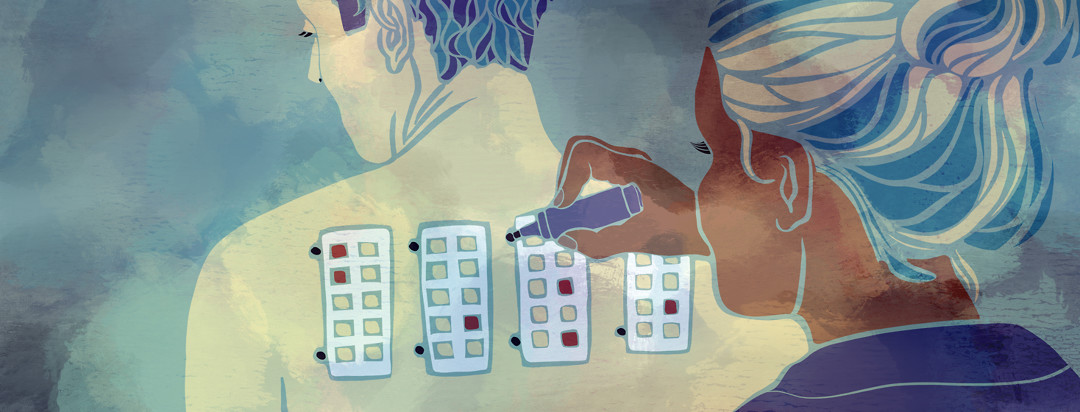Patch Testing 101
A patch test is conducted by your dermatologist to see if a specific substance or chemical is irritating your skin and causing an allergic reaction. This is also known as contact dermatitis. According to the Mayo Clinic, contact dermatitis produces itchy rashes due to contact with a particular substance. This can come from your shampoo, lotion, perfume – even your jewelry! Identifying your contact allergens can help minimize your contact dermatitis.1
How does a patch test work?
The beauty of a patch test is that it doesn’t involve needles! Instead, allergens are placed on patches that are placed on your back. The patches stick to you from hypoallergenic tape. A “T.R.U.E. test” patch test will test for about 40 common contact allergens. Other patch tests have been developed to target ingredients and chemicals in the products you use to test your body against. This is why my patch test included over 150 allergens. I use A LOT of different products, mainly because I enjoy experimenting.
What common allergens do patch tests test for?
Common allergens tested in a patch test include:
- Latex
- Medications
- Fragrances
- Dyes
- Parabens
- Metals
- Nickel
- Cobalt
- Propylene
- Glycol
- Rubber
- Lanolin
- Plants
- Formaldehyde
- Ragweed pollen
How long does a patch test take?
The patches sit on your back for 48 hours, then are removed at home with the help of a friend. Testing is complete after 96 hours. During this time period, you cannot shower or apply any medications or creams to your back. The moisture can mess up the results! Also, you must avoid direct sunlight exposure to the back because UV radiation can decrease the immune response in the skin. It’s truly a very itchy and stinky time. Luckily, you can take over the counter allergy medications like Benadryl (my savior).
What happens after you take the patches off?
After the 96-hour period, you go back to your dermatologist for the patch reading. Any irritation at the patch site can indicate an allergy. To be noted, there can be false positives and false negatives as the test is infallible. Basically, it’s not a perfect test.
My patch test reading
My patch testing reading turned out completely negative. I learned that I am irritated by fragrances, including botanicals and essential oils, which was news to me. Botanicals are substances that come from plants. I was not tested for all botanicals and essential oils, but it’s better to avoid them all and be safe than be itchy.
Tips to prevent contact dermatitis
Once you’ve received your patch reading, there are steps you can take to prevent contact dermatitis or skin irritation:
- Avoid the substances you’re allergic to altogether
- Wash any clothing that might have come into contact with the allergen
- If you are allergic to household cleaners, wear a mask, gloves, or goggles when home to avoid interaction with these irritants
- If you are allergic to metal, and it’s on your clothing, try covering up the metal with tape or an iron-on patch to minimize touching
Ultimately, you want to identify what is causing your contact dermatitis, so it does not get worse and turn into an infection. To receive a patch test, you can talk to your dermatologist and pick a week where you can dedicate the time needed to get proper patch test readings.

Join the conversation